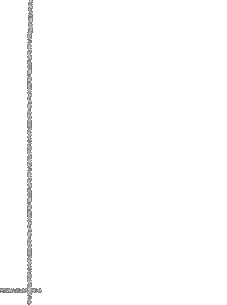 |
|||||||||||||||
 |
 |
 |
|||||||||||||
 |
|||||||||||||||
 |
|||||||||||||||
Each time you use a variable in Java, you must declare what type it is. These types could include primitive types, which are default types in Java, or they could include user defined types of your own construction. There are the 6 primitive types of variable.
Data Type |
Content |
Default Value |
Min Value |
Max Value |
byte |
Integer |
0 |
-128 |
127 |
short |
Integer |
0 |
-32768 |
32727 |
int |
Integer |
0 |
-2147483648 |
2147483647 |
long |
Integer |
0 |
-9223372032654775808 |
9223372032654775808 |
float |
Real |
0.0 |
-3.40282347E+38 |
3.40282347E+38 |
double |
Real |
0.0 |
-1.79769343486231570E+308 |
1.79769343486231570E+308 |
char |
Character |
N/A |
N/A |
N/A |
Boolean |
Logical |
N/A |
false |
true |
char variables only represent single characters. These characters include most of the keyboard strokes on your keyboard, plus some with the escape prefix:
\b backspace
\t tab
\n new line
\f new page (form feed)
\r return to the start of the line
We would like to string together several different characters to represent words and sentences. So at least two classes have been defined to help us do this:
String
StringBuffer
Please note the use of the capital letter “S” when declaring these variables.
For example we can call and initialize a String with the name firstname via:
String firstname=new String(“Jim”);//firstname is defined as Jim
In general, we instantiate a class (that is call it into existence) via the new command. In the case of the String class, we can also use one of the following shortcuts
String firstname; //Declaration and then initialization
firstname=”Jim”;
or
String firstname=”Jim”; //Both declaration and initialization
Please note the use of double quotation marks, “, instead of single quotation marks, ‘, when initializing strings. Single quotes are for character typed variables. Double quotes are for string typed variables.
StringBuffer is an object used primarily for buffered input and output. It is particularly useful for outputting multiple lines of information.
Example Let’s suppose we want to ouput list of numbers from 1 to 10 in a column. In order to output multiple lines of information, you will not be able to use a Label object. One helpful object is a TextArea object.
StringBuffer myStringBuffer=new StringBuffer();
for (int i=1; i<=10; i++){
myStringBuffer.append(""+i+"\n");
}
textArea1.setText(myStringBuffer.toString());
The Convert.java class is useful for converting some data types to other data types. When writing applets, I’ve primarily used the toDouble() and toInt() methods. Syntax for use is
Convert.toType(argmument);
For example, when converting a String named inputString to a double, we would call the method as follows.
Convert.toDouble(inputString);
Currently available methods are summarized in the following table.
static public long |
toLong(String snum) Converts String to long |
static public double |
toDouble(String snum) Converts String to double |
static public double |
toDouble(int inum) Converts int to double |
static public int |
toInt(String snum) Converts String to int |
static public int |
toInt(double dnum) Truncates double to int |
static public int |
toRoundedInt(double dnum) Rounds double to int |
static public String |
toString(double dnum) Converts double to a String |
static public String |
toString(int inum) Converts int to a String |
static public String |
toString(float fnum) Converts float to a String |
I’ve used wrapper classes to construct the Convert.java class. Read on if you are interested in the details…
Other types of variables that we may encounter are ones defined by Double, and Integer classes. Note the capital letter at each of these classes. The class Double is known as a wrapper class for the primitive type double. Thus Double objects and double variables are two different things. The reason Java needs these classes is that it is an object oriented language. With each of these classes is defined a myriad of different methods (i.e. functions/subroutines) that operate on the Double object. But as you might expect there is a close relationship between an object defined by the Double class and a variable defined by the double primitive type. Here’s an example of how to define a Double object.
Double dval=new Double(70.5);
This statement constructs a Double object named dval and gives it the value of 70.5.
Now suppose you want to extract the value of dval and assign it to the double variable height. Here’s how to do this:
double height;
height=dval.doubleValue();
Or, you can combine these three statements into one:
double height=(new Double(70.5)).doubleValue();
You should observe that doubleValue() is one of many methods that will operate on a Double object. Note: There are parallel concepts for Integer objects, Float objects, etc.
To make life simpler for us, I have written a class to take care of the dirty work. If you want to use these shortcuts, you should get Convert.java and import it into your project.
Here's an example of converting a double to a String:
double x=3.645;
String=stringx;
stringx=Convert.toString(x);
We can now output this using the setText() method. For example:
label1.setText(stringx);
Here's an example of converting an int to a String:
int year;
String=stringyear;
stringyear=Convert.toString(year);
Here's an example of converting a float to a String:
float x=3.645;
String=stringx;
stringx=Convert.toString(x);